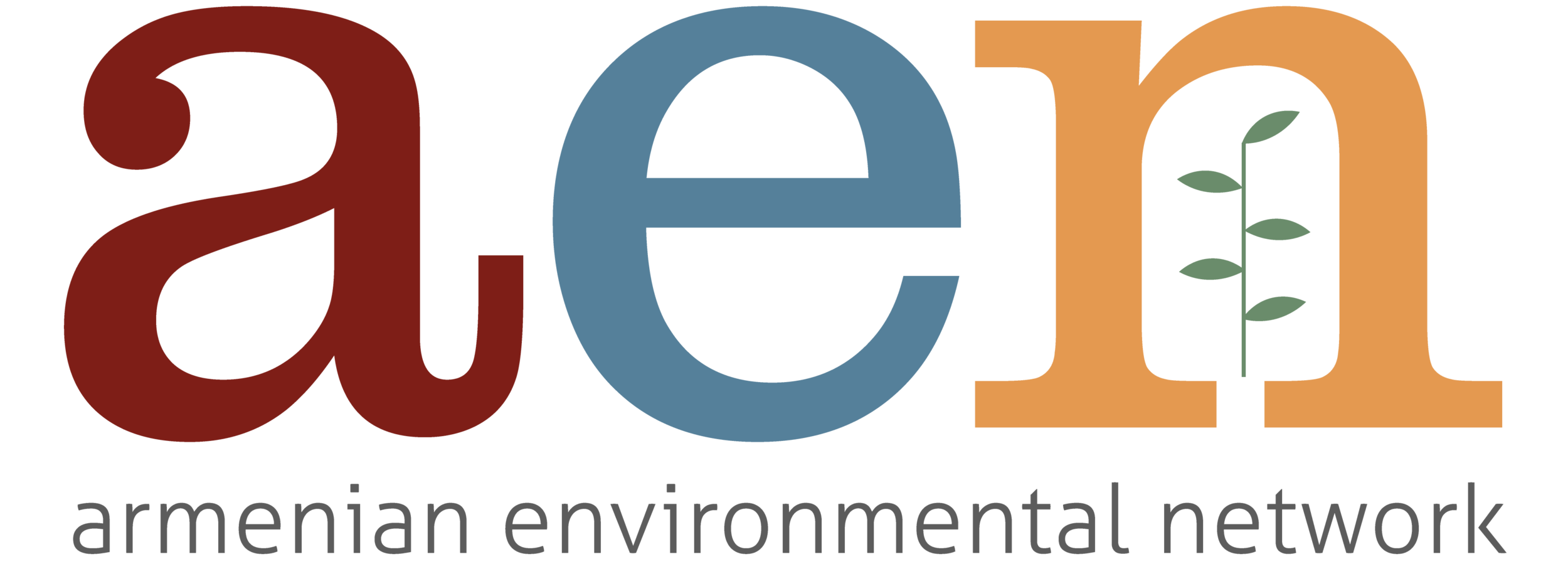Issues
Microclimate Change & Biodiversity
For its size, Armenia has an incredible variety of microclimates throughout the country. This means that different parts of the country are experiencing unique and separate results of global climate change. The great variety of microclimates also leads in turn to a vast amount of biodiversity that is unique to Armenia and to specific habitats. With climate change, rampant deforestation and other land use changes, many species are under threat.
According the Republic of Armenia’s 1999 First National Report on Biodiversity:
A great range of climatic zones have been recorded within Armenia. The country is located centrally in the sub-tropical zone, and thus is prone to arid (desert and semi-desert) conditions. However, the altitudinal variation within the country results in further variation in climatic zones. The mountainous nature of Armenia results in a series of highly diverse landscapes, with variations in geological substrate, terrain, climate, soils, and water resources. These landscapes support a great variety of habitats, which support distinctive flora and fauna, and different human use. Seven distinct landscape zones are described in Armenia: deserts, semideserts, dry steppes, steppes, woodlands, sub-alpine and alpine lands.
As a result of its biogeographical position, diversity of landscapes, variations in altitude and mountainous nature, Armenia supports a wide range of animal species. Such diversity is outstanding compared to other countries of the region. Many of the species that occur exist at the edge of their range, or in separate isolated populations.
According the Republic of Armenia’s 2014 Fifth National Report on Biodiversity:
There are about 3800 species of vascular plants, 428 species of soil and water algae, 399 species of mosses, 4207 species of fungi, 464 species of lichens, 549 species of vertebrates and about 17200 species of invertebrates. The biodiversity of Armenia is notable for high endemism: about 500 species of fauna and 144 species of flora are considered endemics. By the density of high vascular plants Armenia is ranked among first-place countries in the world. The territory of Armenia is notable also for intensive speciation processes and it is not accidental that the researchers of flora and fauna of the country often identify new species for the science.
Its small size, however, also means that these microclimates can be easily impacted, in a detrimental fashion, if care and concern are not shown. This is, in fact, the current reality in Armenia and a great number of plant and animal species are considered endangered. The National Report states that fauna is at great risk and provides a breakdown of the various endangered animal species in Armenia. It claims that 6 invertebrate, 1 fish, 4 reptile, 7 birds and 6 mammal species are endangered in Armenia. It further states:
At present Armenian biodiversity faces serious threats, and as many as half of all plants in the country may require some conservation action. This is not reflected in the Red Data Book which represents only the most highly threatened species and lists only 387 species (12% of the flora).
This data was compiled in 1999 and it is safe to say that the environmental situation has not improved in the intervening years. In 2010 Armenia produced its Fourth National Report on Biodiversity. It states:
Many species of the flora of Armenia are assessed as vulnerable, endangered or critically endangered. On the whole, about half of the wild species growing in Armenia needs protection. Only 387 species (about 12% of the flora) which are in a more alarming state are included in the Red Book.
The Fourth National Report provides numerous additions to the studies conducted on biodiversity risks and abundant inclusions of suggested courses of actions. Notable, however, is that the twelve year period, between reports, has produced little in terms of genuine progress in the protection of these invaluable resources. Report-producing is important, but action is past due. It is time for the Government of Armenia to abide by the suggestions of their own studies and reports.
Additional Resources:
- 2015 Third National Communication on Climate Chnage, developed by the Ministry of Nature Protection with support from GEF and UNDP.
- A quick overview of projected specific climate changes from the Climate Change Information Center of Armenia website.
- UNDP website on climate change adaptaion, specific to Armenia.
- Review of national research, data and projects on climate change, from 2009.
- USAID Biodiversity Analysis Update for Armenia, from 2009.
- Ministry of Nature Protection 2009 report on climate change and water resources.
- Extensive UNDP/Stockholm Environment Institute 2009 report on the socio-economic impact of climate change on Armenia.
- UNDP report, from 2002, on capacity building needs for biodiversity. Provides an overview of relevant ministries and their responsibilities regarding biodiversity issues as well as recommendations for establishing effective protective measuress
- USAID Biodiversity Assessment for Armenia, from 2000. Provides analysis and suggested plan of actions.
- UNEP webpage on threats to biodiversity, specific to Armenia.
